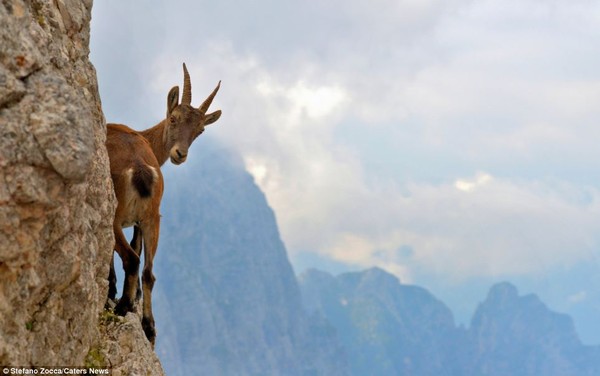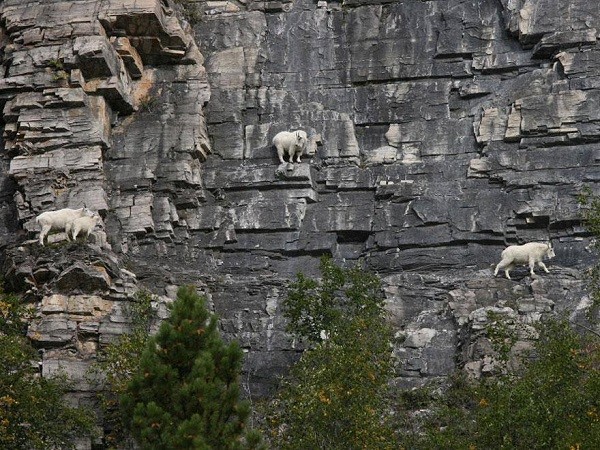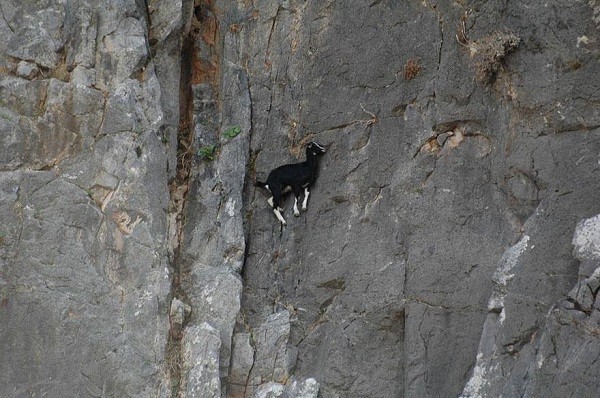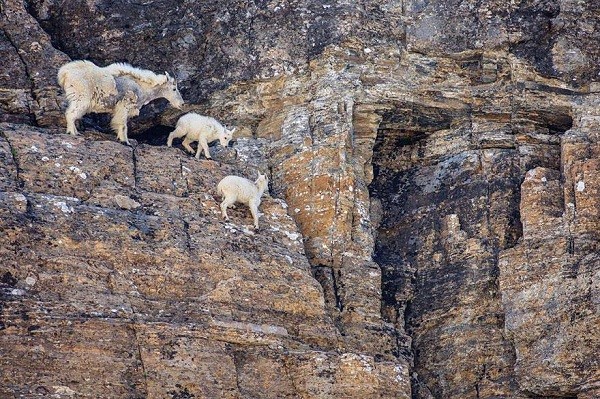Let’s understand more about the ability of goats to climb nearly 457m high rocks in just 20 minutes.
The mountain climbing ability of goats
As one of the first animals to be domesticated and attached very early to humans, the goat is a common symbol in both Eastern cultures (the year of the Goat – 12 Zodiacs) and the West (Capricorn – 12 years old). Zodiac).
This animal is also famous for its many talents such as intelligence, agility, the ability to stay up all night without rest.
However, one of the lesser-known strengths of goats is their unbeatable climbing ability, many times better than feline animals like tigers, leopards and cats.

We can often see herds of wild goats and sheep running around freely and living in the grasslands.
However, in some parts of the world, there are goats that do not live in grasslands, they live on cliffs and possess the ability to freely run and jump on steep cliffs very gently.
Typically, the species Oreamnos americanus, also known as North American mountain goat or snow sheep, requires only a small foothold, this species can easily climb up and down steep cliffs safely. They are capable of climbing nearly 457m high rocks in just 20 minutes.

The reason they have such a talent is because goats possess a special innate body structure, making this animal a master of climbing.

First to mention the even hooves, split into 2 parts with strong and sturdy edges. In the middle of the hooves there is a large enough space and soft fleshy padding.
Double clogs help this animal to have good balance, especially in difficult terrain, and the meat pad acts like a rubber sole to increase friction, firmly clinging to even the smallest contact areas.

Similar to camels, goats belonging to the Artiodactyla order have a very flexible ankle bone structure that supports fast movement and good balance in difficult terrain.

Another feature that helps goats to climb smoothly is their solid and very “muscular” body. The front body of the goat is very strong, especially the shoulder muscles, which helps them to pull the whole body forward when climbing at high altitudes.
However, that doesn’t mean the goat’s hindquarters are weak. In contrast, the hind limbs, although not as strong, are still strong enough to help them have accurate and quick jumps at a height of nearly 4m.

With a body structure with a stronger front body than a rear body, flat terrain is not an ideal environment for them to promote their speed strengths. In contrast, steep, even vertical terrain will suit the goat’s very good pulling and pushing ability.

In addition, experts also found that goats like to choose precarious cliffs to move because they want to avoid the threat of predators that still lurk in normal terrain.
Although they are very skilled at acclimatizing to cliffs, they still occasionally fall from above due to some reason such as avalanches.
In addition, strong winds blowing over mountain cliffs often remove the snow cover on the surface and reveal a layer of vegetation containing a variety of mineral salts that goats love.


Domesticated around 7000 – 10,000 BC, goats are one of the earliest animals to appear in human life.
However, not so that today’s goats have lost their old habits. Goats are characterized by being very intelligent and easily bored, so the instinct to climb and be active has a chance to arise. So, don’t be surprised if you come across a goat standing on the wall like this.
